When it comes to discussions about the strongest bodybuilders in the history of the sport, one name stands out above all others: Ronnie Coleman.
Known as “The King,” Ronnie Coleman is not only an eight-time Mr. Olympia winner but also an absolute powerhouse whose strength has left an indelible mark on the world of bodybuilding.
While many athletes have achieved greatness in the sport, Ronnie Coleman was unique in his combination of size, conditioning, and pure strength.
But just how strong was Ronnie Coleman? Let’s dive deep into the incredible strength of this legendary bodybuilder, exploring his lifts, his training philosophy, and the legacy of power he left behind.
The Beginning: A Powerlifter’s Roots
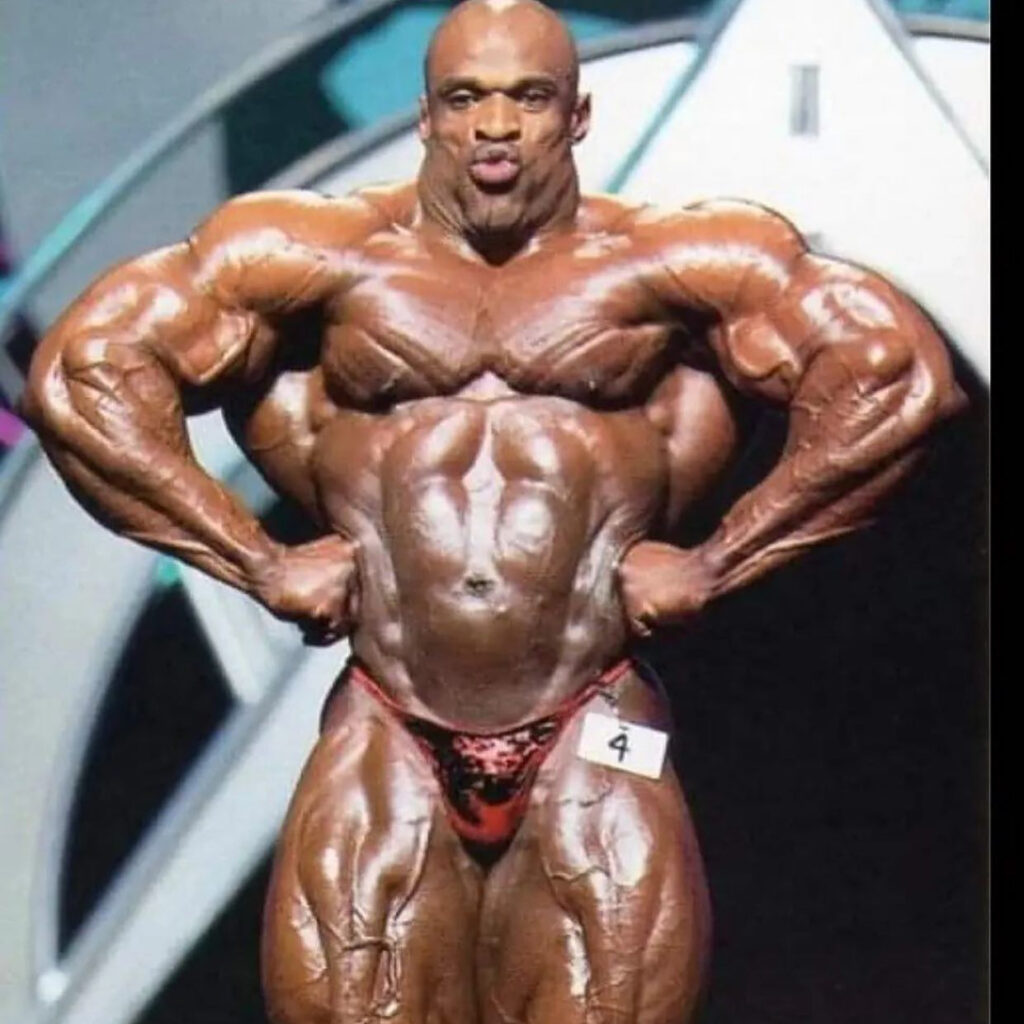
Ronnie Coleman didn’t start as a bodybuilder; his roots were firmly planted in powerlifting, which laid the foundation for his incredible strength.
Born on May 13, 1964, in Monroe, Louisiana, Ronnie Coleman began lifting weights seriously during his college years at Grambling State University, where he played football.
It was during these formative years that he discovered his love for lifting heavy.
After college, Ronnie Coleman worked as a police officer in Arlington, Texas, which allowed him ample time to train.
His passion for strength and power saw him frequently at Metroflex Gym, a hardcore gym where he began his ascent in bodybuilding while still maintaining his powerlifting mindset.
Ronnie Coleman’s Lifts: The Numbers That Shocked the World
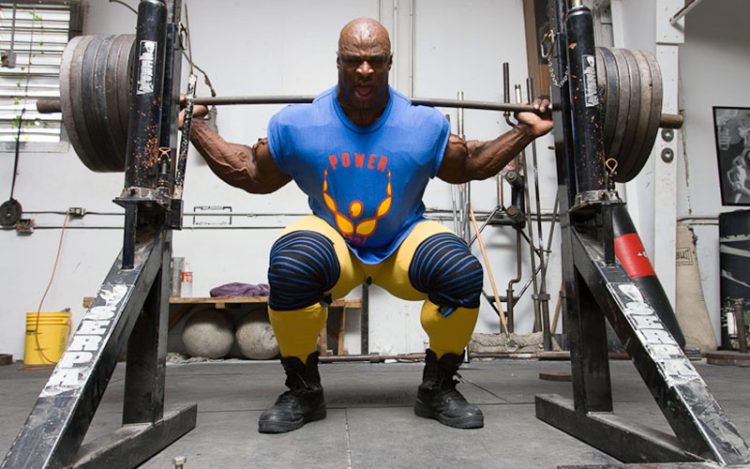
The strength of Ronnie Coleman was not just a result of his dedication to bodybuilding but also his ability to lift enormous weights that very few athletes have ever attempted, let alone succeeded in lifting.
His most famous lifts were regularly documented, and they still serve as a benchmark for bodybuilders and powerlifters today.
Here are some of the most jaw-dropping numbers:
Squat: 800 Pounds for 2 Reps
- One of Ronnie Coleman’s most iconic lifts is his 800-pound squat for two reps. This wasn’t just a powerlifting squat; it was performed with a bodybuilding stance and depth, making it even more impressive. To put this in perspective, most professional bodybuilders typically squat in the range of 500 to 600 pounds, and they do not reach the level of depth or intensity that Ronnie Coleman did. The video footage of Ronnie Coleman squatting 800 pounds, wearing just a simple weight belt, remains one of the most viewed and admired pieces of bodybuilding history.
Deadlift: 800 Pounds for 2 Reps
- Matching his squat numbers, Ronnie Coleman’s 800-pound deadlift for two reps demonstrated his raw pulling power. His form was flawless, and he executed the lift with the kind of control and power that comes from years of training and perfecting technique. For many, deadlifting even 500 pounds is an incredible feat, but to reach 800 pounds for multiple reps is the stuff of legends.
Bench Press: 500 Pounds for 5 Reps
- While Ronnie Coleman is more renowned for his lower body strength, his upper body strength is equally formidable. His bench press of 500 pounds for five reps showcased his incredible chest, shoulder, and triceps strength. Performing this weight for multiple reps demonstrated his ability not only to build mass but also to maintain raw power through a full range of motion. Many professional powerlifters, who specialize in the bench press, would find this weight challenging for a single rep.
Dumbbell Press: 200 Pounds for 12 Reps
- Ronnie Coleman’s strength was not limited to barbells. His famous dumbbell presses with 200-pound dumbbells for 12 reps on each arm illustrated his shoulder stability, balance, and incredible strength. The sheer size and weight of the dumbbells are almost unimaginable; few gyms even stock dumbbells that heavy. This lift is a testament to Ronnie Coleman’s strength, endurance, and focus.
Leg Press: 2,300 Pounds for 8 Reps
- Another legendary lift that showcased Ronnie Coleman’s strength was his 2,300-pound leg press for eight reps. This staggering weight is equivalent to pressing a small car, and the fact that Ronnie Coleman performed this with relative ease speaks volumes about his lower body power. The lift also demonstrated his exceptional cardiovascular endurance and muscular stamina, as he would perform this after completing heavy squats.
The Training Philosophy: Lift Heavy, Train Hard
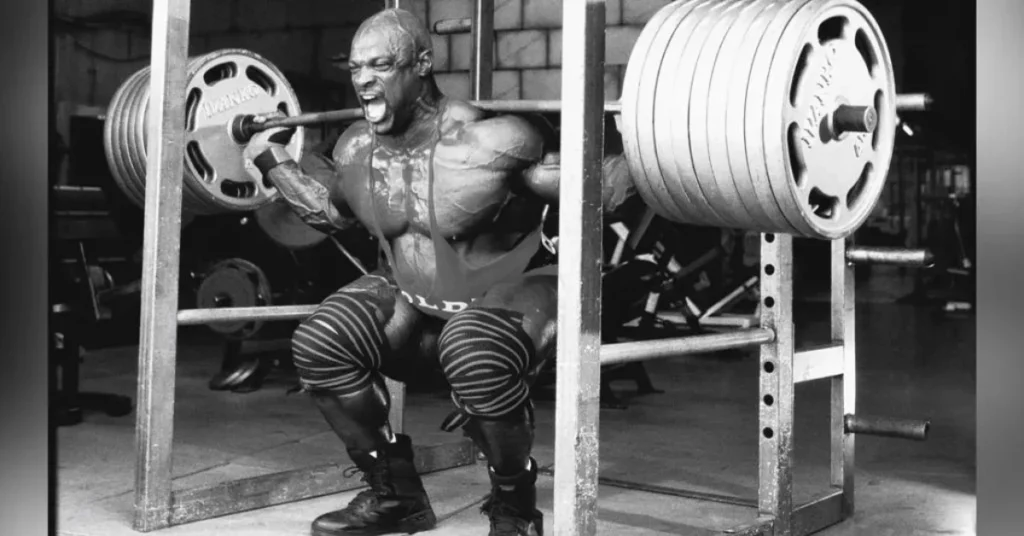
Ronnie Coleman’s approach to training was simple: lift as heavy as possible while maintaining good form.
His famous catchphrase, “Everybody wanna be a bodybuilder, but don’t nobody wanna lift no heavy-ass weight,” encapsulates his philosophy perfectly.
Ronnie Coleman believed that lifting heavy weights was the key to building muscle density and achieving the level of mass necessary to win bodybuilding competitions.
His training sessions were notoriously intense, often lasting two hours or more, and consisted of both high-volume and high-intensity sets.
He would frequently perform compound movements like squats, deadlifts, and bench presses at the beginning of his workout, lifting the heaviest weights possible for multiple sets and reps.
This method not only built strength but also contributed to his massive muscle growth and conditioning.
Ronnie Coleman’s split routine typically involved training one major muscle group per day, allowing him to focus all his energy on maximizing strength gains for that area.
Unlike many bodybuilders who favor lighter weights and higher reps, Ronnie Coleman consistently lifted extremely heavy weights across a variety of exercises, pushing his muscles to their absolute limits.
Nutrition and Recovery: Fueling the Machine

To sustain his intense training sessions and support muscle recovery, Ronnie Coleman adhered to a rigorous nutrition plan.
His daily caloric intake was often around 5,500 to 6,000 calories, composed of a high-protein diet with moderate carbohydrates and healthy fats.
He consumed multiple meals throughout the day, typically eating six to eight meals that included chicken, fish, beef, eggs, rice, potatoes, and green vegetables.
Protein shakes and supplements were also a crucial part of his regimen to ensure he got enough protein to support muscle repair and growth.
Recovery was just as important to Ronnie Coleman as training and nutrition.
Although he pushed his body to its limits in the gym, he also knew the value of rest and recovery.
He would often sleep for 8-10 hours a night, allowing his body time to recover and rebuild.
Additionally, Ronnie Coleman regularly visited chiropractors and massage therapists to maintain his muscle health and joint mobility, crucial for someone lifting the kinds of weights he was known for.
Injuries and the Price of Strength
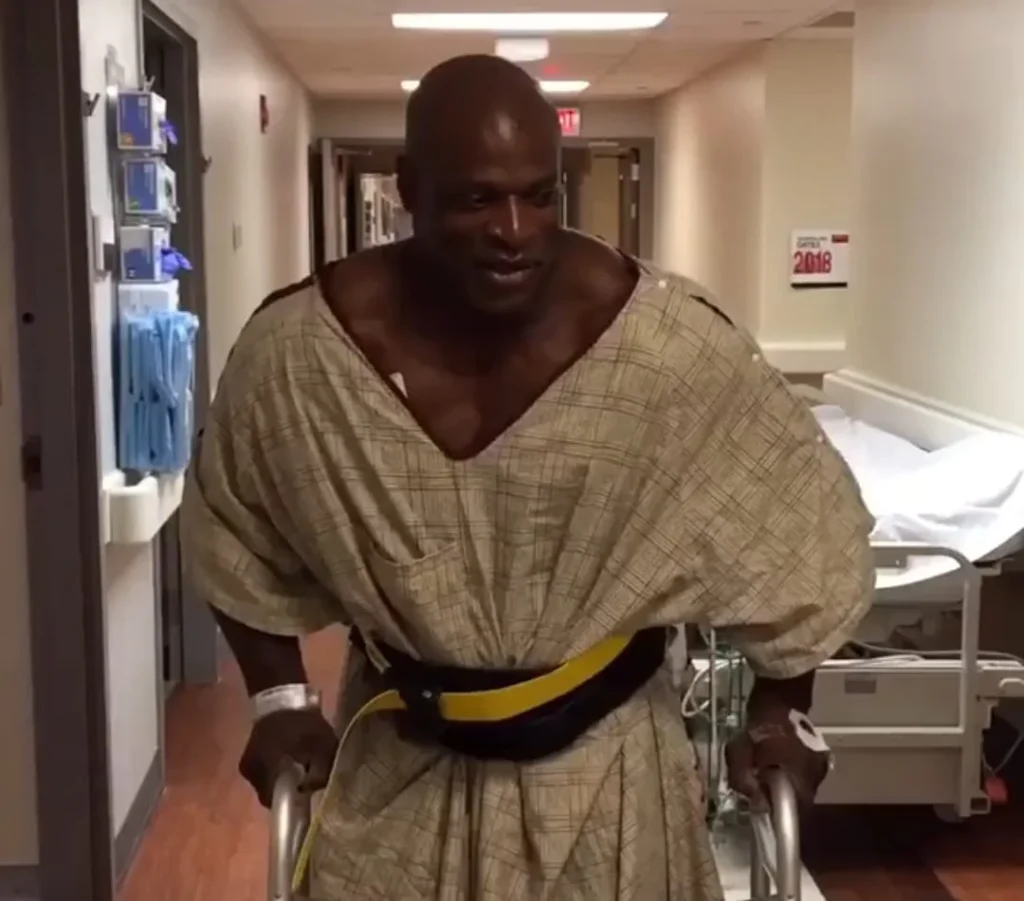
As with any athlete who pushes their body to the absolute limit, Ronnie Coleman’s pursuit of strength came with a cost.
Over the years, Ronnie Coleman suffered multiple injuries, particularly to his back and hips. These injuries were primarily due to the immense weights he lifted consistently throughout his career.
Despite numerous surgeries, including multiple spinal fusions and hip replacements, Ronnie Coleman continued to train, albeit at a reduced capacity.
His injuries are a testament to the toll that extreme weightlifting can have on the body, but also a reflection of his dedication and passion for the sport.
Ronnie Coleman has expressed no regrets about his approach to training, often stating that he would do it all over again if given the chance.
His love for bodybuilding and lifting heavy weights defined his career, and he remains an iconic figure not only for his strength but also for his perseverance and determination.
The Legacy of Ronnie Coleman’s Strength
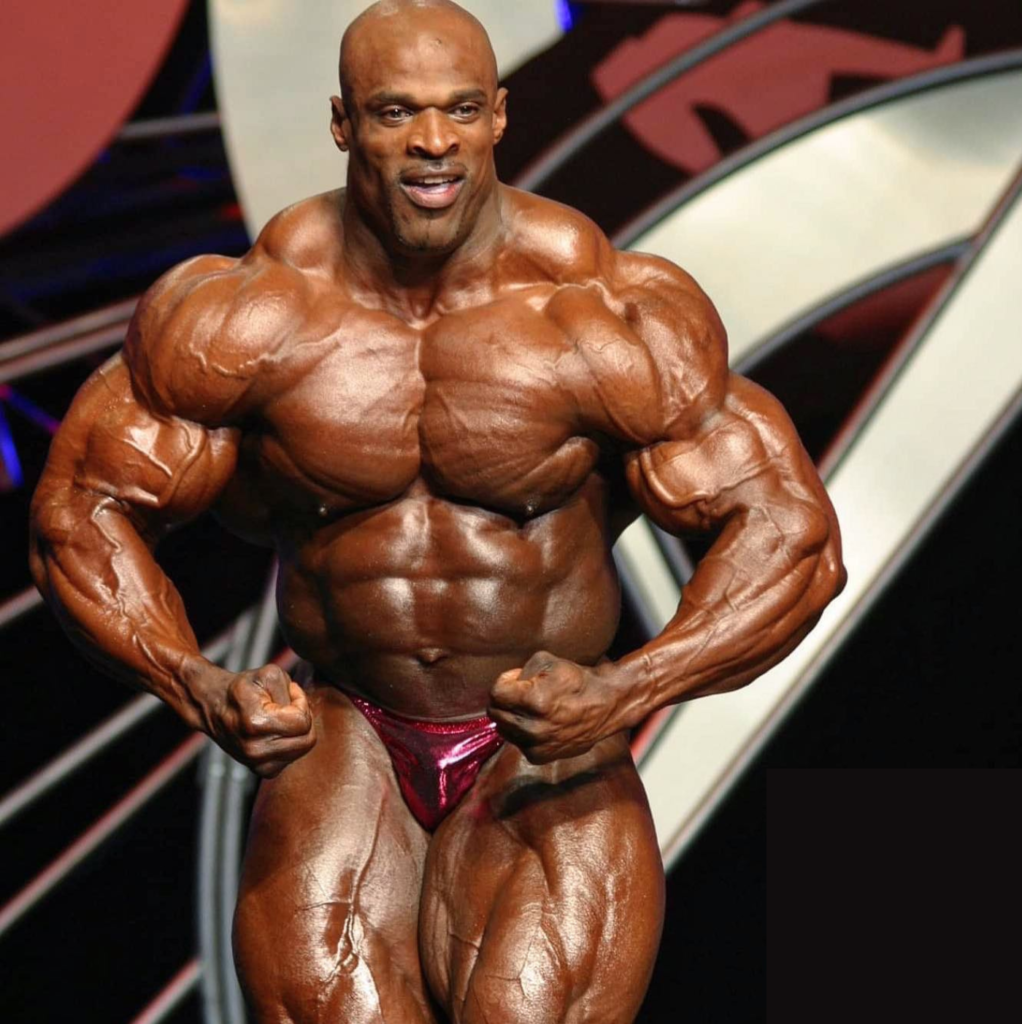
Ronnie Coleman’s strength is legendary, and his records remain a benchmark for bodybuilders and strength athletes worldwide.
His achievements in the gym and on the competitive stage have inspired countless individuals to pursue strength and bodybuilding.
His videos, showcasing his incredible lifts and training sessions, continue to be popular among fans and aspiring bodybuilders.
They serve as both motivation and a reminder of what can be achieved through hard work, dedication, and an uncompromising will to be the best.
Ronnie Coleman redefined what it meant to be a strong bodybuilder. His ability to combine size, symmetry, conditioning, and strength was unmatched, setting a standard that few have been able to meet.
While other bodybuilders may have lifted heavy, none did so with the consistency, intensity, and charisma of Ronnie Coleman.
How Strong Was Ronnie Coleman, Really?

To answer the question, “How strong was Ronnie Coleman?”—he was incredibly strong, perhaps the strongest bodybuilder ever in terms of both his lifts and his dedication to strength training.
His ability to perform 800-pound squats and deadlifts, bench press 500 pounds, and shoulder press 200-pound dumbbells for reps, among other feats, placed him in a league of his own.
These numbers are not just impressive; they are near the limits of human potential for someone in his sport.
Ronnie Coleman’s strength wasn’t just about the numbers, though. It was about his relentless pursuit of greatness, his ability to push through pain and injury, and his unwavering commitment to his craft.
Even in the face of injuries and surgeries, Ronnie Coleman’s attitude remains positive, and his spirit remains unbroken.
He embodies the idea that true strength is not just physical, but mental and emotional as well.
Conclusion: A True Titan of Strength
Ronnie Coleman will forever be remembered as a titan of strength in the bodybuilding world.
His lifts, his training philosophy, and his incredible determination have made him a legend, and his name is synonymous with power and resilience.
Ronnie Coleman’s journey from a police officer lifting weights in a local gym to becoming an eight-time Mr. Olympia winner, who redefined what it meant to be strong, is one of the most inspiring stories in sports history.
Ronnie Coleman’s legacy as one of the strongest bodybuilders of all time will endure, not just for the numbers he put up, but for the passion, drive, and courage he displayed throughout his career.
For those who ask, “How strong was Ronnie Coleman?”—the answer lies not only in the weights he lifted but in the strength of his spirit and his undying love for the sport of bodybuilding.
